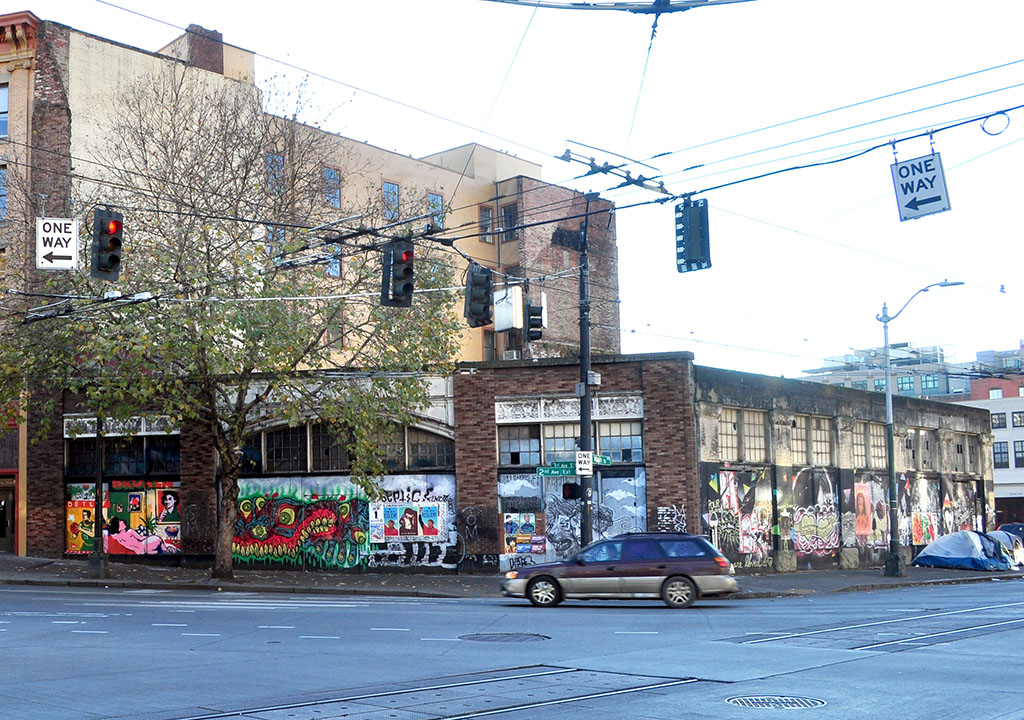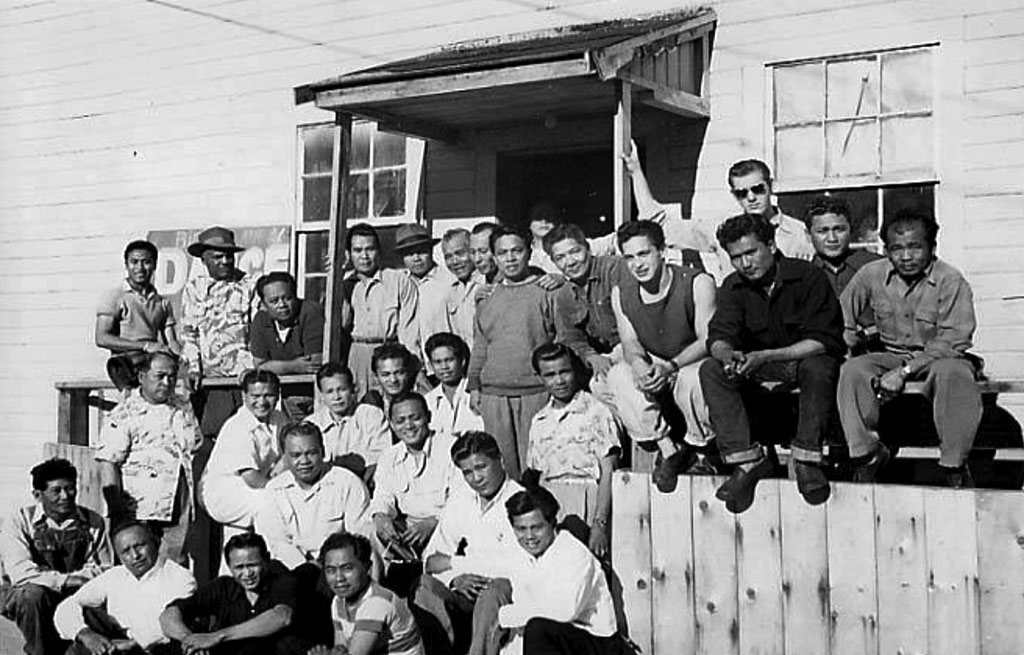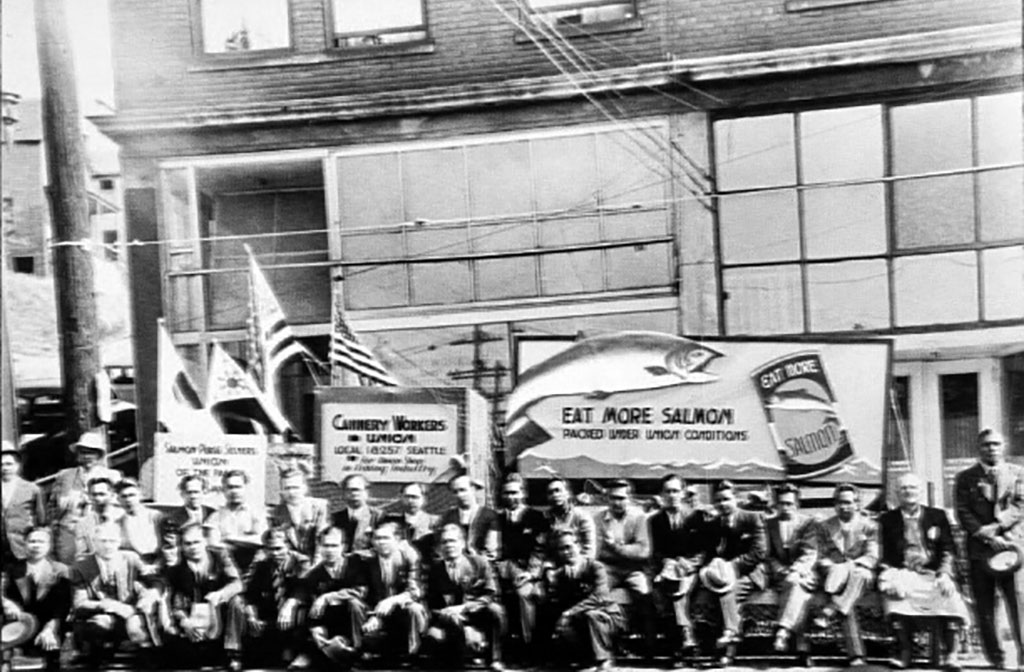Former Location of Filipino Cannery Union
Southwest corner 2nd Avenue S and S Main Street
Tour: Pioneer Square
-
Former location of Filipino Cannery Union
Southwest corner 2nd Avenue S and S Main Street
Southwest corner 2nd Avenue Ext S and S Main Street
Filipinos comprise the second largest group of Asian descent in the Seattle area. The first wave to arrive came under the auspices of the 1903 Pensionados Act, legislation developed after the Spanish-American War in 1898, when the Philippines became an American territory. The act subsidized students to enroll in U.S. colleges; within a few years, the University of Washington had the highest pensionado enrollment in the country. Similar to other Asian immigrants, Filipinos often faced overt racism, including harassment and beating.
Although both men and women came to the United States from the Philippines, young males were the most numerous. They often ended up working in hotels and agriculture, as well as in Alaskan canneries, which became one of the major hirers of Filipinos. During the Depression, when wages for unskilled cannery jobs dropped by 40 percent, Filipino workers decided to unionize. On June 19, 1933, they formed Local 18257 of the Cannery Workers and Farm Laborers Union, which was the first Filipino-led union in the United States. An historian of the Union wrote that “it was extremely significant to Filipino Americans in an era when discrimination prevented them access to most other jobs.” The union had 3,000 members by 1939 and won important rights such as an eight-hour work day and wage increases. Other local unions organized around waterfront issues included the International Longshoremen’s Association and the International Longshore and Warehouse Union.
The CWFLU established its headquarters in what had been a laundry building on the southwest corner of 2nd Avenue S and S Main Street, a building it purchased in 1943 and used for the next 50 years. It was three stories tall, built in 1900, and got its odd, cutoff eastern side when the 2nd Avenue Extension was built in 1928-1929. The Union put its staff offices on the upper floors and rented out on the bottom floor. After sustaining damages in Seattle’s 1949 earthquake, the building lost its upper floors.
Perhaps the most famous Filipino migrant to pass through Seattle was novelist and poet Carlos Buloson, whose book America Is in the Heart (1946), is a semi-autobiographical account of his experiences. “We arrived in Seattle on a June day. My first sight of the approaching land was an exhilarating experience. Everything seemed native and promising to me,” wrote Bulosan. Later, after being exploited by an Alaskan cannery and witnessing a deadly fight in a Seattle nightclub, the narrator writes “I was glad to get out of Seattle — to anywhere else in America.” In his final years in Seattle, Bulosan was often penniless and jobless. He died of pneumonia in September 1956, at the age of 43, and is buried on Queen Anne hill.
Walk west on S Main Street to Second Avenue S, turn left, walk south to S Jackson Street and the Klondike Gold Rush NHP.





